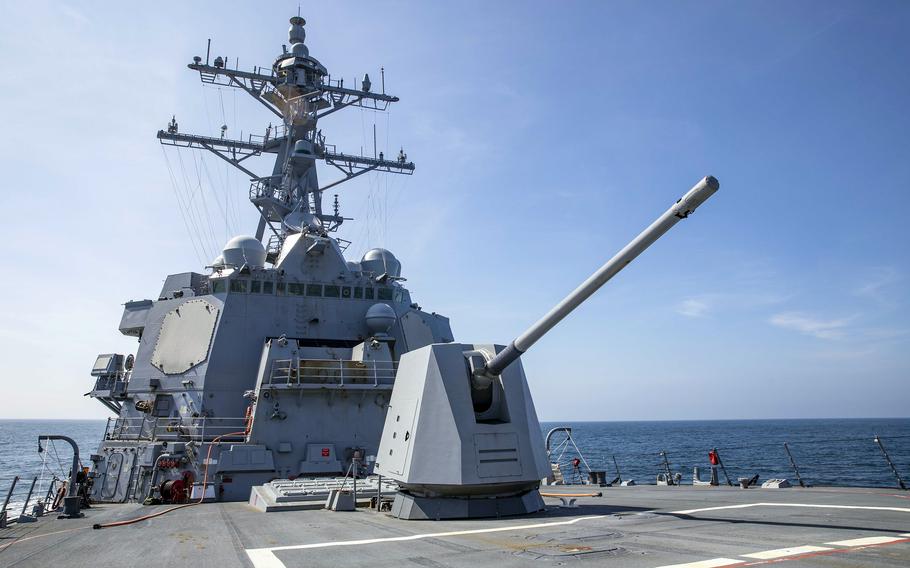
The guided-missile destroyer USS Ralph Johnson steams in the South China Sea on Aug. 22, 2024. (Jamaal Liddell/U.S. Navy)
A pair of U.S. Navy ships made a rare, two-day trip through the Taiwan Strait this week, marking the first transit of the contentious waterway under the Trump administration.
The guided-missile destroyer USS Ralph Johnson and the survey ship USNS Bowditch sailed southwest through the 110-mile-wide channel that separates mainland China from Taiwan between Monday and Wednesday, U.S. Indo-Pacific Command told Stars and Stripes by email Thursday.
“The transit occurred through a corridor in the Taiwan Strait that is beyond any coastal state’s territorial seas,” wrote command spokesman Cmdr. Matthew Comer. “Within this corridor, all nations enjoy high-seas freedom of navigation, overflight, and other internationally lawful uses of the sea related to these freedoms.”
Transits of the strait typically last less than a day and are announced via news releases from INDOPACOM or the U.S. 7th Fleet. However, this week’s passage was not publicly announced by either command as of Thursday morning.
Comer did not address questions about the transit’s timing, length or why it wasn’t publicized.
Seventh Fleet spokeswoman Lt. j.g. Sarah Merrill, in an email Thursday, referred all questions about the transit to INDOPACOM.
The United States regularly sends warships and, less frequently, aircraft through the strait. This week’s transit marks the first since President Donald Trump was sworn into office on Jan. 20.
The 7th Fleet last announced a transit on Nov. 26 by a P-8A Poseidon maritime patrol and reconnaissance aircraft.
The Navy typically describes the transits as a routine means of traveling between the East and South China seas, but Beijing views them as provocative and regularly condemns them as support for Taiwan. China considers the island, a functioning democracy, a breakaway province that must be reunified with the mainland, by force if necessary.
China’s military tracked the ships’ passage via naval and air forces, China’s Eastern Theater Command spokesman Col. Xi Li said in a Wednesday post on the command’s official Weibo social media account.
The transit “sent the wrong signal and increased security risks,” he wrote, adding that troops remain on high alert to defend regional stability and China’s sovereignty.